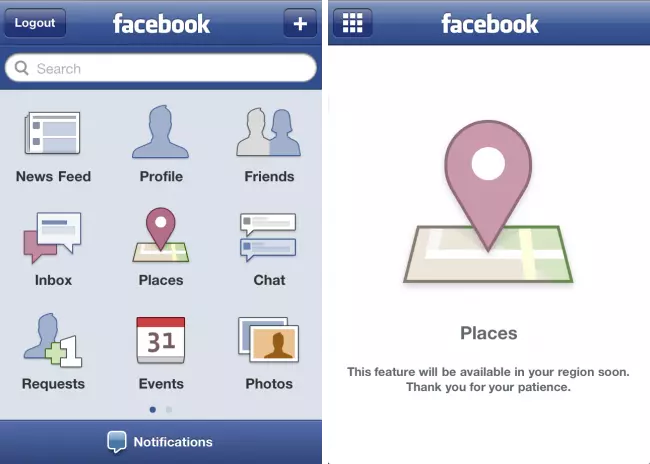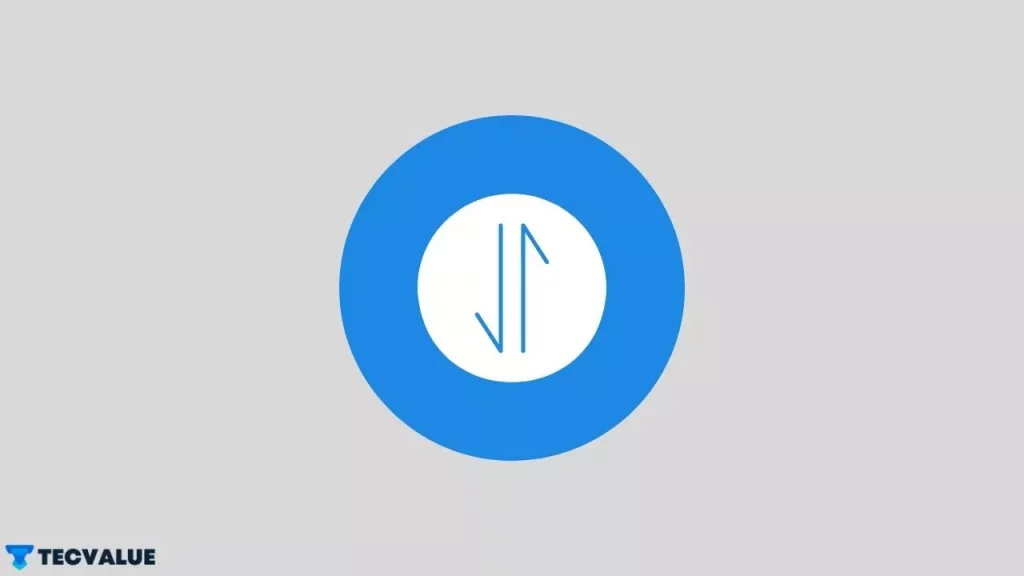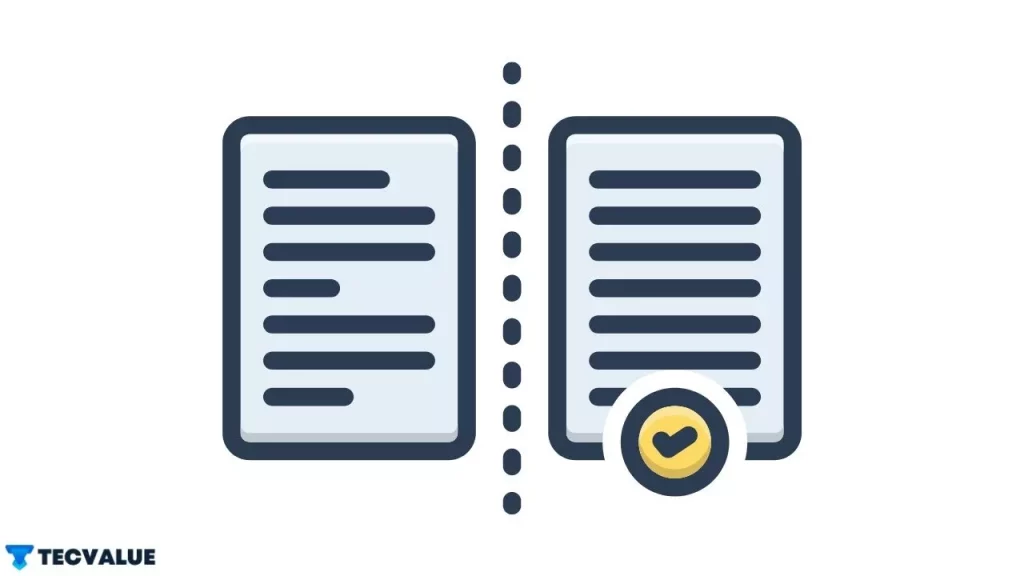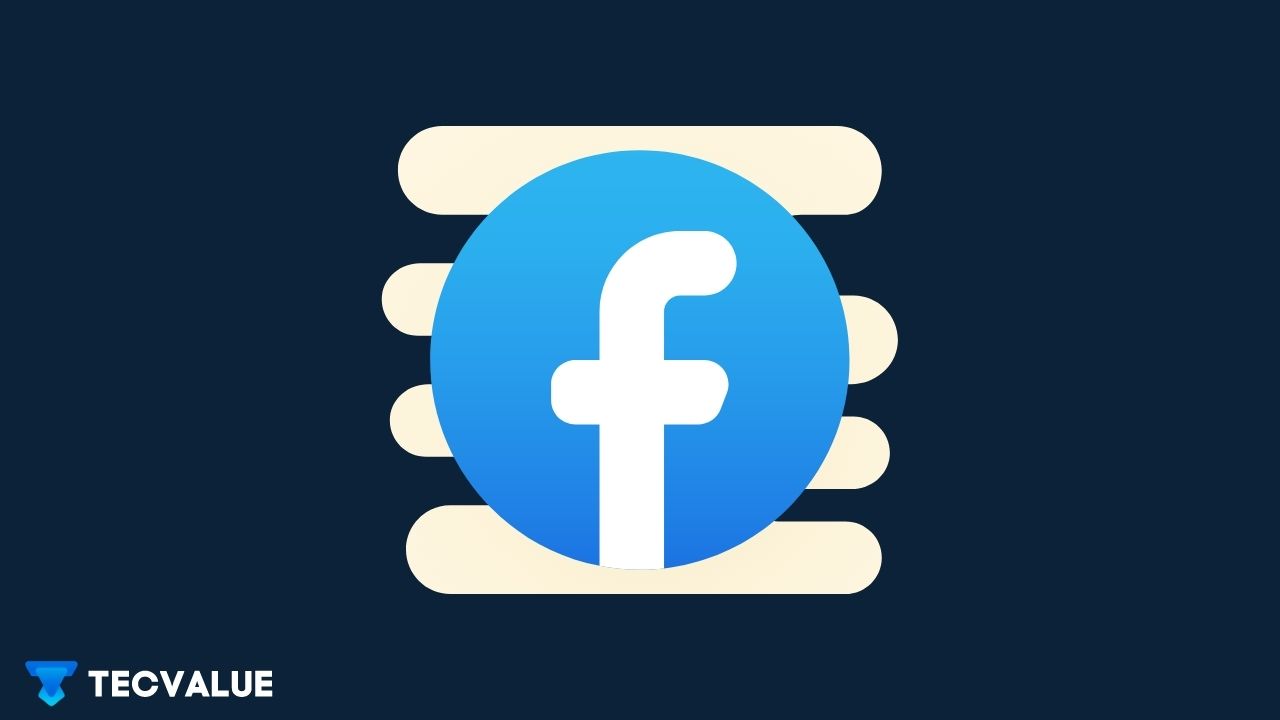Facebook as a social media, is a whirlpool of information and opinions of all sorts. The company, however, falls under “The Big Five”, the five most popular and top-performing companies of the World — MAANG(formerly, FAANG).
It didn’t become a tech giant overnight. Through years of tireless efforts, innovation and user-focused UI/UX revamps, Meta, formerly Facebook, engraved its place at the apex.
It was in early 2009 when Facebook touch was launched as one such byproduct of Facebook’s efforts of increasing their reach and accessibility in order for them to engage with an even wider range of audiences and cater to the needs of the growing userbase.
In the following sections of the article, a brief history of Facebook touch and its development has been discussed exhaustively. If Facebook Touch piqued your interest, do read the full length of the article.
What is Facebook Touch (touch.facebook.com)
Facebook Touch as of now, is one of the many subdomains of Facebook, just like Facebook Mobile. Its functionality is more or less the same as Facebook Mobile. You can access it by typing in this URL: https://touch.facebook.com/ in your browser OR by clicking this link here. It also had an unofficial Windows 8 application. Although one can draw the line here, there’s more to it than meets the eye. ‘

To truly understand the importance of Facebook Touch and why it is still relevant, we will have to take a walk down the timeline of Facebook’s evolution.
Facebook Touch — History and Development
In 2009, Facebook was steadily growing as the most widely used social networking service. It had already buried its roots deep into the social media and technological domain.
With the ground firm and its foundation all steady, it was undergoing the phase where the focal point of all efforts was to widen the horizon of its reach so as to build a solid, consistent, and ever-expanding user base.

At par with Facebook, the userbase of touchscreen smartphones was also parallelly growing. iPhone 3G was the most popular mobile phone of 2009. This is clearly imperative of the demand and hype for the new and surging touchscreen models.
Now, how is the growth of the touchscreen mobile industry related to Facebook Touch?
Well, the commoner’s eye viewed the boom of touch screen phones as simply a technological trend of the coming age but, the growth-oriented mindset of Facebook envisioned it as an excellent business opportunity to amplify their userbase reach through touch screen device targeted products with (as you might have already figured)Facebook Touch being their gateway into the touch screen market.
Facebook Touch is a subdomain of Facebook which was exclusive to touch screen smartphones. It is almost identical to Facebook Mobile but it was better, far better. Facebook Touch was an enhanced and expanded version of Facebook’s mobile app.
It was established as a more intricate and sophisticated version of the social networking website, specifically suited for touch screen smartphones.
Functionally, it was the same as any other Facebook app but had the added pros of being lightweight with improved graphics and a more user-friendly and accessible interface.
The revamped UI and UX gave Facebook Touch the much-needed edge over its competitors and counterparts. Essentially, Facebook Touch was the 2009 website version of the modern-day Facebook Lite application which was released in 2012. In quite a few ways, it was ahead of its times.
Given, the intricate history of Facebook Touch, it is quite natural for questions to arise like ” What happened to Facebook Touch” because I can confidently claim that a good number of people who were introduced to Facebook post-2012 have never heard of Facebook Touch.
Stick with us as we address these questions. Before we delve into that, let us analyze the pros and cons of Facebook touch.
Features of Facebook Touch
Let’s look over the list of features that Facebook touch brings to the table.
- Low internet usage compared to regular Facebook application
- Battery efficient
- Little to no storage consumption
- Friendly User Interface
- Smooth and seamless User Experience
- Higher quality video and image renders
- Light weight compared to the conventional Facebook mobile application
- Has practically all of the functionalities of conventional facebook.com
- All these added benefits whilst maintaining all the inherent functions and features of Facebook
- Anything you can do on Facebook app, you can do it here
Pros and Cons of Facebook Touch
Let’s glance into the pros and cons of Facebook Touch. This will definitely help you decide if it’s worth a shot or not.
Pros:
Let’s dive into the advantages that come with Facebook Touch.
User-Friendly Interface
This is what users prioritize and expect from anything they use or put effort and time in; if a platform is user-friendly, it will immediately attract a wide audience.
Facebook took a step forward and developed the ‘Touch’ version to make it more user-friendly and accessible for touchscreen mobile device users.
Facebook Touch can be used by people of all ages and browsing through the site is as easy as it gets. The location of all the features such as groups, pages, settings is identical to the m.facebook.com interface.
So, people who are migrating from Facebook mobile will not face any hassle while navigating the site.
Storage and Battery Consumption
No one wants their phone’s battery or storage capacity to be drained by an app. So, if you have a variety of applications on your phone that are taking up a lot of storage space and power but cannot be uninstalled, we say get rid of the dedicated regular Facebook app and get your hands on Facebook Touch.

In contrast to the Facebook application, it consumes way less battery and storage space due to being a website and not a full-blown application.
Whatever resource usage you monitor whilst using facebook touch is mostly the demands of the browser that you are using. If you wish to further cut down resource usage, do opt for a lightweight browser.
Low internet Usage
Facebook Touch has been found to have relatively lower internet usage when compared to the benchmarks of the regular Facebook application or website.

Even though it runs on a browser, which itself burns internet bandwidth, it still manages to keep the internet usage to a minimum thus, becoming a favorable choice for people with limited internet data to spare or those who want to preserve their internet the most and make sure no byte goes to waste.
Quality of Experience
One of the primary points of attraction in the Facebook Touch site is the quality of experience. The UI and UX were the core of the website. Back in 2009, it was like a breath of fresh air with the revamped and accessible user interface and user experience.

Since that it has maintained the quality of user experience. The user interface is also identical to m.facebook. So, if you are a new user or an existing user, migrating to this new platform will feel like home.
Higher Quality Images and Video
Facebook Touch was launched with the focal point being: accessible to touch screen mobile devices and to be capable of displaying images and video at a higher quality than the regular Facebook site.

Over the years, this has been maintained. If you visit Facebook Touch, you will find the images and videos being rendered in higher quality with much more clarity.
The boost in quality is not limited to the video only. Even the audio is much clearer and sounds better in Facebook Touch.
Cons
Now that we know what Facebook Touch brings to the table, let us glance over its downsides to see if the cons weigh down the pros and if facebook touch is worth using.
Jittery User Experience
One downside to Facebook Touch that has been frequently reported by users is the jittery user experience which contradicts the site’s selling point: better UI / UX.
The reason behind the sometimes jittery and laggy experience is that there are too many vectors acting on the quality of experience that the site can deliver.
What this means is that between you, the user, and that HD video of puppies on Facebook touch, there is the browser, the internet speed, the amount of usable RAM, Storage, the battery health, and the overall spec of the device.
All of these need to be in the optimum state for the site to function at its full potential. When one of these vectors is lacking, that’s when you can experience stutter or lag while surfing through the social media network.
To eliminate the said reason, Facebook Lite was launched. We’ve laid out a deep comparison on the difference between Facebook Touch and Facebook lite further down the article.
Browser Dependent
As previously mentioned, the proper and smooth functioning of the website is hugely dependent on the browser that you are using.
If you are using a resource-heavy browser say, Chrome, your experience might suffer from occasional stutters while browsing through the social media website.

We recommend using a lightweight browser to dedicatedly handle browsing on Facebook Touch. Moreover, do keep track of your RAM availability and Storage space.
They are equally important to assure you will have an optimal experience. You can implement RAM cleaners and storage optimizer applications to work out this issue.
How to Open Facebook Touch PC, Android, iPhone
Accessing Facebook Touch is a piece of cake. You can log into Facebook Touch using the same credentials you would use when logging into m.facebook or the conventional Facebook application/website.
Here’s a step by step guide on how to log into Facebook Touch from PC or smartphones:
STEP 1: Fire up the internet browser of your choice. Preferably Chrome, Brave, Safari(on Mac), or Edge(on Windows PC).
STEP 2: Head over to this link or type in this URL into the address bar of your browser: https://touch.facebook.com/
STEP 3: You should be met with the login page of touch.facebook. Proceed to enter your credentials and OTP.
STEP 4: If you entered the correct credentials and logged in successfully, you should now be at the home page of Facebook Touch. Surf on and enjoy your experience!
How To Create Facebook Touch Shortcut
If you find yourself amused by the interface and experience and want to make Facebook Touch more accessible, you can do so by creating a web app shortcut to the website.
Here’s how to create a Facebook Touch Shortcut:
Create Facebook Shortcut on Android
Here’s a tailored step-by-step guide on how to create a Facebook touch shortcut on android:
STEP 1: To get to the Facebook Touch page, open your favorite web browser and go there.
STEP 2: While the website is showing on your screen, press the menu button on your internet browser, it looks like an ellipsis, with three dots in the upper right corner.
STEP 3: Then click the “Add to Home Screen” button to conclude the process.
Now you’re Facebook Touch shortcut should be added to the Home screen. You can tap on it to directly access Facebook Touch instead of having to go through the hassle of manually typing in the URL.
Create Facebook Shortcut on iPhone
Here’s a tailored step-by-step guide on how to create a Facebook touch shortcut on iOS:
STEP 1: Fire up the Safari web browser(or any other browser) on your iPhone and proceed to the Facebook Touch website.
STEP 2: Proceed to bring down the drop-down menu by touching on the right-pointed arrow beside the browser box.
STEP 3: Confirm your selection by tapping on the “Add to Home Screen” option.
Now you’re Facebook Touch shortcut should be added to the Home screen of your iPhone. You can tap on it to directly access Facebook Touch instead of having to go through the hassle of manually typing in the URL.
Difference between Facebook Touch and M Facebook, Facebook Lite
On Facebook, many users are confused about the differences between Facebook touch and the regular ” m Facebook” or Facebook mobile.
For conventional Facebook, “https://m.facebook.com” will appear as the address, whereas “https://touch.facebook.com” will lead you to Facebook Touch.’

You’ll find the usual Facebook on m.facebook.com that is tailored for minimal data usage, lower-quality photos, and just a restricted number of screens.
The “touch.facebook.com” domain was primarily used only for high-resolution photos and videos. Following the surge of touchscreen devices in 2009, Facebook Touch became widespread.
We have already covered it in the previous section. Do look over it for a brief history of Facebook Touch.
It is recommended to use Facebook Touch only if you are donning a capable android or iOS device with plenty of resources. This is because your device has to bear the resource usage of both the browser and the website.
It’s important that there is sufficient free RAM and processing power left to spare in order to operate Facebook Touch seamlessly.
Both M facebook and Touch facebook need equal amounts of resources but, Touch Facebook comes out as a tad bit more demanding to fuel its capabilities of higher quality visual display.
In contrast to Facebook Touch, the Facebook Lite version is a much more lightweight locally installable application that runs a stripped-down version of Facebook in a much more optimized user interface.
The visuals are comparatively weaker than Facebook Touch or M Facebook. This is recommended for low-spec devices.
To conclude, there really isn’t a noticeable difference between M facebook and Facebook Touch to the average joe. You won’t really notice any peculiar changes when migrating from one or the other.
Both M Facebook and Touch Facebook are equally well maintained and supported. You can pick either and continue navigating through the social network.
Just see for yourself, if you are able to truly differentiate between Facebook Touch and Facebook M. If you find any significant differences, do comment it down below to let us know!
Which is Better Facebook Touch or M Facebook
Before we conclude which is better Facebook Touch or M Facebook, let us closely study each individually.
What is m.Facebook
You may have noticed that when you try to log in to Facebook using the browser on your mobile phone, you are redirected to https://m.facebook.co/ rather than the conventional https://www.facebook.com/ While you may observe that m.facebook functions similarly to regular Facebook, with minor exceptions, what is m.facebook? Is m.facebook even a real domain?
Launched in 2006, M.facebook is the mobile browser version of the Facebook social networking website, just like its many other domains.
It’s legitimate in every sense of the word since it’s still a part rather, an extension of Facebook, but it’s in the shape of a mobile version that was designed to suit a mobile phone’s browser.
What is touch.Facebook
Facebook Touch as of now, is one of the many subdomains of Facebook, just like Facebook Mobile. Its functionality is more or less the same as Facebook Mobile.
You can access it by typing in this URL: https://touch.facebook.com/ in your browser OR by clicking this link here. It also had an unofficial Windows 8 application
Released in 2009, Facebook Touch is a subdomain of Facebook which was exclusive to touch screen smartphones. It is almost identical to Facebook Mobile but it was better, far better. Facebook Touch was an enhanced and expanded version of Facebook’s mobile app.
It was established as a more intricate and sophisticated version of the social networking website, specifically suited for touch screen smartphones.
Functionally, it was the same as any other Facebook app but had the added pros of being lightweight with improved graphics and a more user-friendly and accessible interface.
The revamped UI and UX gave Facebook Touch the much-needed edge over its competitors and counterparts. Essentially, Facebook Touch was the 2009 website version of the modern-day Facebook Lite application which was released in 2012. In quite a few ways, it was ahead of its times.
Is touch.Facebook better than m.facebook
Had you asked this question in 2009, the answer would have been a definite yes. However, time and tide wait for none, and certainly enough, Facebook Touch wasn’t an exception.
As of 2022, both m.facebook and touch.facebook are equally capable of providing a smooth and seamless user experience and interface on browsers.
There is little to no difference in the usability and functionality of the two. Facebook touch, though being lesser-known, is equally maintained and supported at par with the rest of the Facebook counterparts, conventional facebook.com and m.facebook.com.
So, to conclude, there isn’t a better one between the two. You can choose either of them to start or continue your journey on the social networking site.
If you prefer a lightweight application for low-spec and older devices, you can consider opting for Facebook lite application. It is a stripped-down and needless to say, lighter version of the Facebook mobile application.
What Happened to Facebook Touch 2022
Leaps ahead of the regular Facebook app but hardly anyone has heard of it. Such irony begs the questions like why it happened and is Facebook Touch still relevant in 2022. The answer is a very intuitive and simple one.
Facebook Touch was overshadowed by the ever-evolving Facebook Application and its newer releases like Facebook Lite which provided a locally accessible version of the social media site.
When Facebook Lite was launched in 2012, it was largely positively welcomed by users due to carrying over similar functionality of the Facebook app whilst managing to remain lightweight and swift.
Being only a few MBs large, anyone could download it on their mobiles and get instant access to Facebook and Messenger. It also consumed significantly low amounts of internet data while running. What more could one ask for?
Facebook Lite encompassed everything that the users were asking for and more. Swift performance – check, seamless experience – check, appealing UI — check check check.
Being a lightweight and scarcely demanding application, it further massively aided Facebook in expanding its reach because upon its release, anyone could afford to use the Facebook App locally without having to go through hassles of data usage, storage space, and insufficient RAM.
Facebook Lite application bridged the gap between low-spec mobile users and the social media site.
All these contributed to overshadowing Facebook Touch, which also encompassed these features but only on an online website level.
You needed a web browser to access Facebook Touch and oftentimes, it would become a hassle due to the different functionalities of different browsers.
Facebook Lite eliminated this issue as well because it was a complete application and not just a website. Being a dedicated application, it also provided a much cleaner and overall better experience when compared to Facebook Touch website.
Facebook Touch is still maintained and supported at par with the other subdomains. This ensures a safe and secure experience while browsing on it. So, be assured that if your heart wishes, you can definitely use Facebook Touch as an alternative to M Facebook any day without batting an eye.
Is Facebook Touch Worth Using 2022
Given that we have gone over all of the app’s functions, merits and drawbacks, there is no doubt that Facebook Touch is worthwhile to use. It ultimately boils down to your priorities and preferences.
Many people find it more useful than the Facebook app, while others prefer to use the official Facebook app. People with limited software resources can take advantage of this without worrying about running out of space.
Furthermore, as compared to the Facebook standard app, Facebook touch does not do any harm to the mobile device.
Touch is also more secure than the app because it runs on the smartphone using a third-party web browser and the website itself is secure with HTTPS SSL. Which in layman’s means that you can freely input sensitive data into the site without batting an eye as it is completely secure through encryption.
It is worth using and as good as it gets even in 2022. Mostly due to being maintained and supported at par with the rest of Facebook counterparts such as facebook.com and m.facebook.com alike.
Is Facebook Touch Safe to Use
Safety is a priority whenever we subject ourselves to a public platform that will hold our personal info. Facebook, as a social media platform, is a humongous database of private information. So, it is a necessary question to ask whether Facebook Touch is safe or not?
Well, you will be relieved to know that the answer is yes. Yes, Facebook Touch is as safe as the rest of Facebook versions say m.facebook and regular Facebook.
This is largely due to the fact that Facebook touch is equally maintained at par with Facebook mobile and original Facebook. It guarantees that Facebook Touch is well shielded from any sort of safety concerns.
You can create your Facebook Touch account right away or migrate to Facebook touch without having to worry about security and safety at all.
EndNote by TecValue
Facebook Touch is a strong alternative to the regular Facebook Application or m.facebook site. However, if you have faced no issues while using the regular and m.facebook site, then migrating over to Facebook Touch won’t be too beneficial for you.
On the contrary, if you are dealing with storage, RAM, or battery issues or just simply don’t wish to keep a local FB application, then you can definitely consider switching over to Facebook Touch. In this article, we’ve provided every piece of information necessary for you to make the switch.

